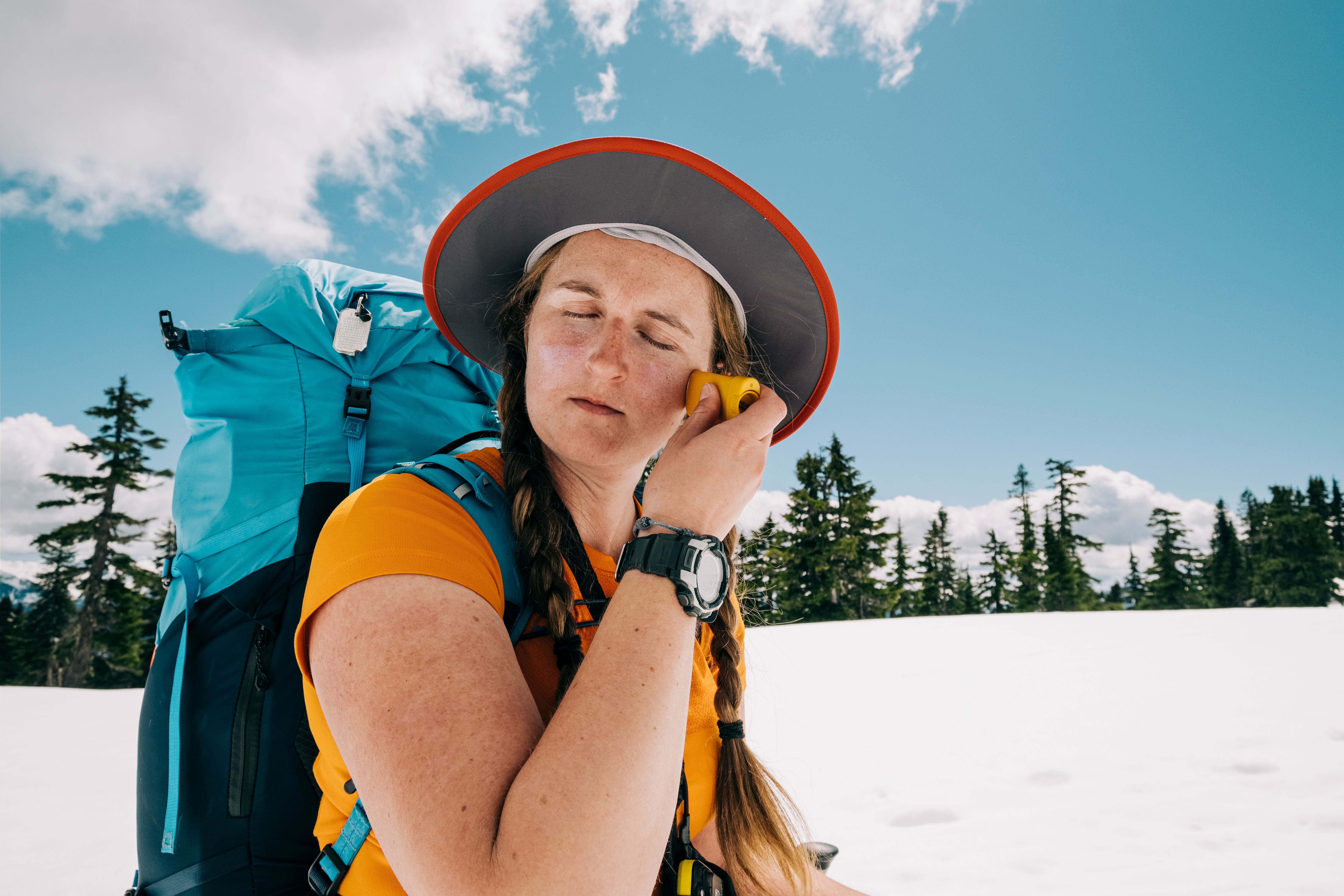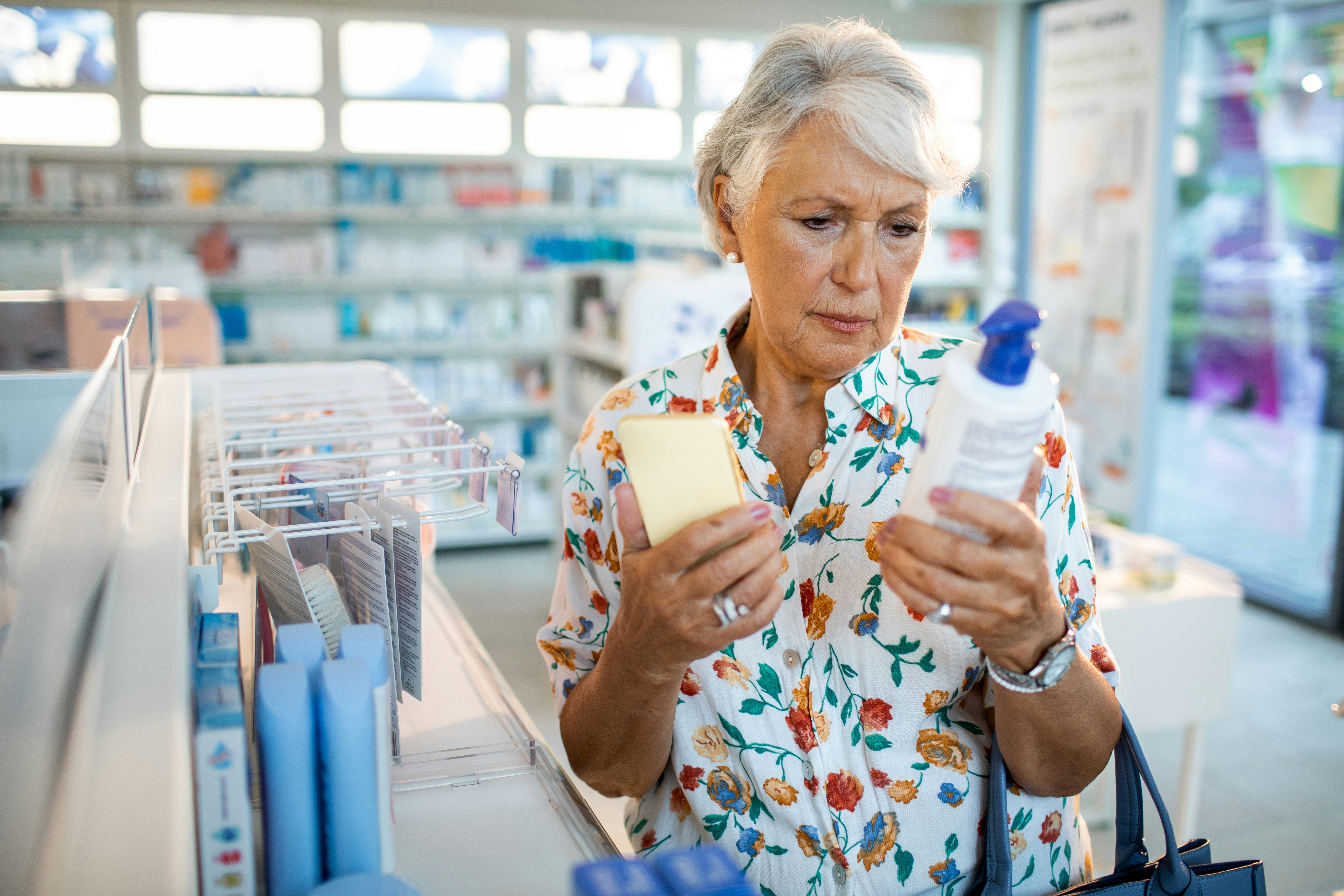
Summer is right around the corner and chances are your skin is going to be hit with some ultraviolet rays. By now, you hopefully know that sunscreen is incredibly important: It prevents skin cancers, painful sunburns, and even wrinkles. However, how to actually wear sunscreen properly is more complicated than you might think.
In recent years, the FDA has scrutinized certain chemicals found in some sunscreens over concerns that they can be absorbed into the bloodstream. Certain ingredients can also have damaging environmental effects. So what’s a sunburn-avoiding, environment-loving person to do? Inverse spoke to sunscreen experts about how and when to apply sunscreen and what to look for when you’re buying it.
Is sunscreen the best way to protect yourself from sun exposure?
Sunscreen is one tool in sun protection, George Zaidan the Assistant Director of the American Chemical Society and author of Ingredients: The strange science of what we put in us and on us, tells Inverse.
“You should think of sunscreen as an extra layer, not your *only* means of protection from the sun,” he says. The other layers are clothing, hats, sunglasses, and — crucially — behavior: “Don't purposely roast yourself in the sun all day, especially not in the middle of the day when the sun is strongest,” he says.
Melanie Palm, a board-certified dermatologist who practices in California agrees. Sunscreen is important, she tells Inverse, and recommends a “broad-spectrum sunscreen of SPF 30 or higher, and applying it at least 15 to 20 minutes before you go outdoors to give your sunscreen enough time to absorb into your skin.”

In addition, “seek shade and avoid being in the sun from 10 a.m. to 4 p.m., when UV rays are the strongest.” If you anticipate spending a lot of time in the sun, wearing clothes with a UPF rating is also a good idea, she says.
Just as sunscreen has SPF, some clothes have UPF. A UPF rating tells you what fraction of UV rays are blocked by the clothing; UPF 50 clothing blocks all but 1/50 (2 percent) of UV rays. UPF-rated clothing is available in shirts, pants, hats, and face masks, among others, says Palm.
Wearing sunscreen, UPF clothing, and staying in the shade or out of direct sunlight for prolonged periods of time — especially between 10 am and 4 pm — is a good bet for a healthy skin summer.
In addition to clothing, researchers have also found that age-old parasols can provide a five-degree reduction in heat stress and provide a 30 percent reduction in “the experienced intensity of solar radiation.”
When should you apply sunscreen?
The American Academy of Dermatology recommends wearing sunscreen whenever you go outside, regardless of how sunny or overcast it is. It notes, “even on cloudy days, up to 80 percent of the sun’s harmful UV rays can penetrate the clouds. Be extra mindful about applying sunscreen around snow, sand, and water, as these surfaces reflect the sun’s rays, increasing your chance of sunburn.”
How should you apply sunscreen?
As an extremely sunburn-prone person, I have many memories of my parents slathering me in sunscreen and rubbing it in like they were trying to get a stain out of the carpet. But Zaidan says that’s actually the wrong way to apply sunscreen.
“Most people use sunscreen like moisturizer — they rub and rub and rub until it’s gone,” Zaidan says. That’s not exactly how it was designed to work.
What you want to do instead is to form a protective barrier on top of your skin by spreading it lightly across your skin and then letting it dry. As it dries, Zaidan says, the sunscreen stays on the top layer of your skin. This is why your sunscreen bottle says to wait for 15 minutes before getting in the water or doing anything else; you need to give the sunscreen a chance to dry completely.

Palm adds that people often don’t use enough sunscreen and miss important parts of their bodies.
The American Academy of Dermatology recommends most people use about an ounce of sunscreen on their body, says Palm, and a quarter-size amount for their face, although this depends on body size.
If you need help picturing an ounce of sunscreen, imagine the amount of sunscreen that would fill a shot glass. That’s how much you want to use on your body.
“My philosophy is when in doubt, add more,” Palm says.
And don’t forget to slather some of that sunscreen on the often overlooked areas like “the neck, ears, tops of your feet, lips, and eyelids,” she says. “People typically miss these areas, but these body parts are especially susceptible to sun damage.”
How often should you reapply sunscreen?
Palm says you should reapply sunscreen every 90 minutes if you plan to be outside for an extended period of time. But some people may need to apply it more frequently.
“If you’re sweating or swimming, you’ll want to reapply more frequently,” she says. “I recommend bringing a sunscreen stick or SPF brush-on powder with you as an easy, mess-free way to reapply sunscreen while outdoors or on the go.”
What SPF should you use?
Like Palm, the American Academy of Dermatology recommends looking for sunscreens that are over 30 SPF, broad-spectrum (meaning they offer protection from both types of ultraviolet sunlight, UVA and UVB), and water-resistant.
Sun Protection Factor (SPF) corresponds to something called the “minimal erythema dose,” which Palm says can broadly be defined as the amount of time one can spend in the sun wearing a certain SPF before burning.
“For example, if someone like me burns after just three minutes of sun exposure, I would burn after 30 minutes wearing the proper amount of sunscreen labeled as SPF 10,” she says. “In reality, most of us underapply sunscreen by at least 50 percent, meaning that the label of SPF on the bottle does not equate to the protection we are applying on our skin.”
The FDA also notes that because the sun has varying intensity throughout the day and people burn at different rates, SPF isn’t a foolproof way to determine how long one can be in the sun before burning, but that it’s a “relative measure of the amount of sunburn protection provided by sunscreens. It allows consumers to compare the level of sunburn protection provided by different sunscreens.”
While it’s a somewhat faulty way to evaluate sunscreen one thing is clear: Higher SPF offers more protection from sunburn than sunscreens with lower SPF.
In a 2017 study published in the American Journal of Dermatology, researchers asked skiers in Vail Colorado to use SPF 50+ on one side of their face and SPF 100+ on the other. How often the participants reapplied the sunscreen and the techniques they used to apply it was similar on each side. After six hours of sun exposure, more than half (55 percent) of the participants showed signs of sunburn on the 50 SPF side of their face, but only 5 percent showed similar damage on the 100 SPF.
What ingredients should you potentially avoid when buying sunscreen?
In 2019, the FDA stated it was investigating certain ingredients in sunscreen, specifically chemical sunscreens.

“There is ample evidence that some chemical sunscreens do cause systemic absorption after topical application, especially oxybenzone, octinoxate, octisalate, octocrylene, homosalate, and avobenzone,” Palm says. “Because chemical sunscreens convert light energy into heat, instead of reflecting it like physical sunscreen agents, they can cause heat production that can also be detrimental to photoaging. This, combined with the risk of systemic absorption, means I tend to recommend physical over chemical sunscreen formulations.”
There is an ongoing debate about some of these chemicals and some researchers have found the dangers overblown.
“This is the eternal debate of "are chemicals bad," Zaidan says. “Some are. Most aren't. The trick is knowing which is which, and that's hard and requires lots of careful research. And another layer is that any chemical can be bad for you in high enough quantities. Again, the trick is knowing how much.”
That research is still ongoing, and there isn’t yet a settled answer about all the debated ingredients. Still, with so many non-chemical sunscreens (also called mineral or physical sunscreens) available, a consumer may feel comfortable going with one of those.
Palm says, “Published studies show mineral micronized sunscreen remains on the surface of the skin.”
Some mineral sunscreens can leave behind a white residue, which can be especially frustrating for people with darker skin tones. Fortunately, some sunscreen manufacturers understand this and have created more inclusive sunscreen options.
Regarding the environmental effects of some sunscreens on the environment, Palm says, “There have been some reports of chemical sunscreen agents causing damage to marine life. For this reason, certain jurisdictions have outlawed the use of chemical sunscreens. The precise concentrations for oxybenzone and octinoxate to affect marine life is poorly understood.”
Do people with darker skin need sunscreen?
Zaidan says one common, and potentially deadly misperception people have about sunscreen and sun damage is that people with darker skin don’t get sunburned or skin cancer.
“Both of those things are flat out false,” he says.
He outlined a few key points people often miss or misunderstand:
- People with darker skin do tend to get fewer sunburns and have a lower incidence of skin cancer, but the keywords are “fewer” and “lower” and that doesn’t mean zero.
- If you have darker skin, it’s still a good idea to go to the dermatologist once a year.
- Skin cancer can be hard to spot, especially if you don’t know how to look for it, or you’re not looking for it; if you don’t catch skin cancer early, it can metastasize and become far more dangerous.
- Unfortunately, the vast majority of sunscreen research is carried out on white people, but there’s no reason to think that sunscreen wouldn’t protect people with darker skin tones as well.
Do people in different locations have different sunscreen needs?
Palm says where you live and the climate you’re exposed to are extremely important when it comes to sunscreen needs.
“If you live in a sunny climate, wearing SPF consistently is even more important – although I recommend wearing SPF 365 days out of the year, regardless of where you live,” she says. “You might also consider choosing a higher SPF and/or using more than the prescribed amount (in addition to implementing some of the safeguards outlined in question #1) if you live in a sunny climate.”
In other words, Zaidan says, “The sunscreen needs of someone in Finland are going to be different from the sunscreen needs of someone in Australia.”
While debates over individual ingredients may not yet be settled, one thing the experts agree on is the vital importance of regular sun protection for your short-term and long-term health. So lather up, sport sun-protective clothing, and be mindful of how long and when you’re in the sun.







